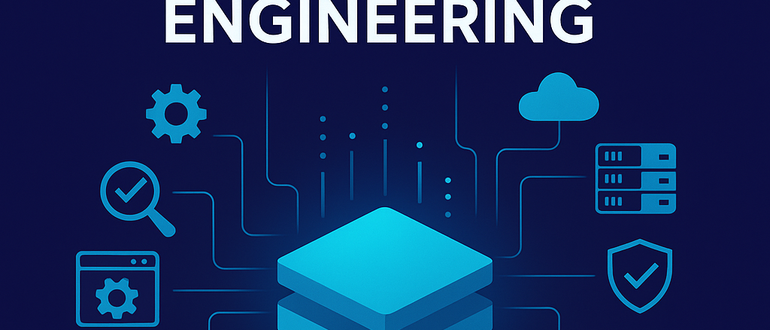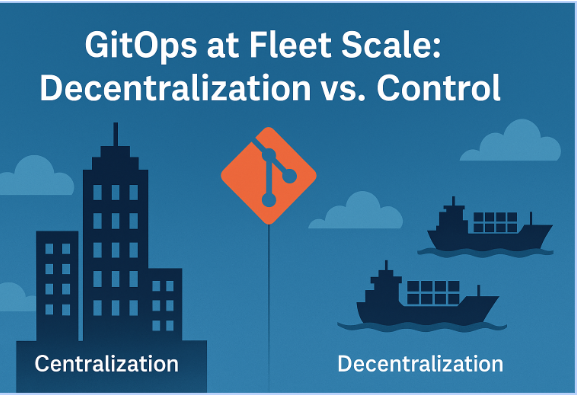
Every few years, the pendulum swings. In technology, it’s centralization versus decentralization — who calls the shots, who executes and where autonomy ends. Platform engineering is living this battle daily. On one side, centralized platforms give consistency, governance and efficiency. On the other, local teams demand autonomy, flexibility and speed. Too much of either and the system buckles.
GitOps once promised to resolve this tension by making Git the single source of truth. You describe the desired state, automation handles the rest, and suddenly consistency meets agility. That works fine when you’re wrangling a handful of clusters. But when you’re dealing with fleets — hundreds or thousands of clusters spanning public cloud, on-prem and the edge — the old tug-of-war resurfaces.
Red Hat’s recent technology preview of an agent-based Argo CD model for OpenShift GitOps shows just how real this problem has become. It pushes reconciliation work out to lightweight cluster agents while keeping a central control plane for policy, compliance and observability. In other words: Let the locals run the show — but only within the lines you draw.
For platform engineers tasked with scaling GitOps across fleets, this moment forces a hard question: What does control really mean at fleet scale?
What Fleet-Scale GitOps Actually Looks Like
In its announcement, Red Hat described the new architecture this way:
“To address the GitOps scalability, security and operations challenges in fleet scenarios, Red Hat introduced a new agent-based Argo CD architecture. These agents pull desired state configurations from a centralized Argo CD control plane, applying updates locally without requiring the central server to maintain direct control over each cluster.”
That sentence is loaded with implications for platform teams. Instead of a central control plane micromanaging every cluster, agents sit locally, syncing against Git, reconciling state, and keeping things humming — even if the WAN link blips.
Think of it as GitOps with a trust-but-verify model. The central plane still owns the repos, the policies, the dashboards. But it delegates execution.
The benefits are obvious: Scale, security and resilience. Red Hat itself points out that the model “improves scalability, reduces resource consumption, and enhances fault tolerance.” For any platform team staring down the chaos of multi-cloud and edge, that’s attractive.
Why Decentralization Appeals to Platform Engineers
So why are so many organizations exploring decentralized GitOps models?
- Performance & Latency
When every config pull or policy check has to run through a central service, delays add up. Agents shrink the communication distance, which matters when you’re running at the edge or in latency-sensitive environments. - Autonomy & Speed
Regional or business-unit teams want to move at their own pace. Local agents give them that breathing room without abandoning standards completely. - Resilience
Central plane down? WAN link flaky? Agents keep clusters reconciling and running. For edge and field deployments, this is survival, not luxury. - Efficiency
Running reconciliation for thousands of clusters centrally is resource-hungry. Distributing that work makes sense—cheaper, leaner, less brittle.
Decentralization, in short, lets the platform scale without collapsing under its own weight.
But Centralization Isn’t Dead
Before we crown decentralization the winner, let’s be clear: Centralization still matters, maybe more than ever.
- Governance & Compliance Enterprises live under regulatory obligations. Encryption, RBAC, network policies—these aren’t optional. A central plane assures that policies aren’t being bypassed.
- Observability & Traceability
When incidents happen, platform teams need to answer: what changed, who approved it, where did drift occur? A central vantage point makes this possible. - Avoiding Drift
Too much autonomy without oversight is a recipe for drift. Configurations diverge, environments become snowflakes, and debugging becomes a nightmare. - Simplifying Ops
It’s paradoxical, but sometimes fewer global policies are easier to manage than hundreds of local variants. Over-centralization creates bottlenecks; over-decentralization creates sprawl. Platform teams have to walk that fine line.
The Federated Model: Guardrails, Not Gates
The sweet spot is a federated model: Centralized policy, decentralized execution.
That’s what Red Hat’s Argo CD agent-based architecture is hinting at. Local agents execute autonomously, but policies and observability live in the center. Guardrails define the roads, but local drivers still drive.
For platform engineering, success with this model requires some hard-won practices:
-
-
- Policy as Code: Declarative, versioned, auditable policies with OPA, Kyverno, or Gatekeeper.
- Drift Detection: Dashboards and alerts that light up when clusters start to wander.
- Role Boundaries: Crystal-clear definitions of what local agents and teams can and can’t do.
- Governance that Trusts: Decentralization works only when you trust your teams — and when they trust that the central plane isn’t a choke point.
-
What Red Hat’s Preview Teaches Platform Engineers
Here’s what matters for platform teams:
-
-
- The Argo CD agent model is in tech preview now in OpenShift GitOps. It’s compatible with existing Argo CD setups, so you’re not burning the house down to try it.
- The design ties into other simplifications (like ambient mode in the service mesh), signaling a broader push: Reduce overhead while preserving compliance and observability.
- It’s not GA yet. The coming months will reveal whether enterprises can run this model at scale, across unreliable networks, and in organizations where compliance isn’t negotiable.
-
Shimmy’s Take: Power, Trust, and Platform Control
At the end of the day, GitOps at fleet scale isn’t about YAML, CRDs, or Argo CD versions. It’s about power and trust.
Who sets the rules? Who enforces them? Who do you trust to act locally, and what happens when they break that trust?
For platform engineers, the answer is neither full centralization nor full decentralization. The winning move is building platforms with guardrails, not gates.
-
-
- Define the roads, the speed limits, the traffic lights.
- Let local teams drive without waiting for central sign-off at every turn.
- Use agents to distribute execution and autonomy.
- Use centralized policy and observability to distribute trust.
-
Done right, this doesn’t just scale GitOps. It scales platform engineering itself. Because platform engineering’s mission has always been about striking that balance: empower teams without losing control.
Red Hat’s preview is a promising sign. But the test won’t be in the architecture diagrams — it will be in the messy realities of compliance audits, lossy edge networks, and organizations where some teams still think “GitOps” means “YAML as wallpaper.”
Decentralization is inevitable at fleet scale. Control never goes out of style. The platform engineer’s job is to build the federated middle path — where speed meets safety, autonomy meets compliance, and innovation doesn’t mean chaos.
That’s the future of GitOps at fleet scale. And that’s where platform engineering proves its worth.

